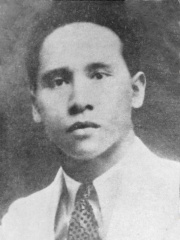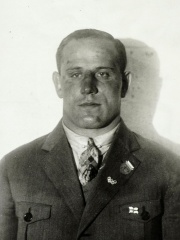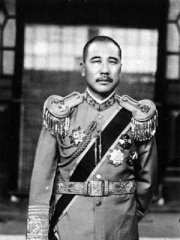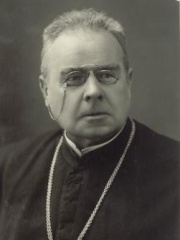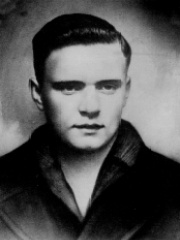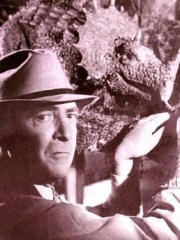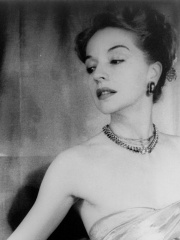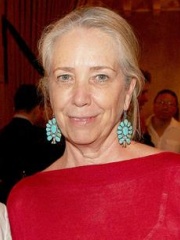WRITER
Hart Crane
1899 - 1932

 Hart Crane
Hart Crane
Harold Hart Crane (July 21, 1899 – April 27, 1932) was an American poet. Inspired by the Romantics and his fellow Modernists, Crane wrote highly stylized poetry, often noted for its complexity. His collection White Buildings (1926), featuring "Chaplinesque", "At Melville's Tomb", "Repose of Rivers" and "Voyages", helped to cement his place in the avant-garde literary scene of the time. The long poem The Bridge (1930) is an epic inspired by the Brooklyn Bridge. Read more on Wikipedia
His biography is available in 34 different languages on Wikipedia. Hart Crane is the 4,161st most popular writer (up from 4,163rd in 2024), the 6,141st most popular biography from United States (down from 5,495th in 2019) and the 467th most popular American Writer.
Memorability Metrics
Page views of Hart Crane by language
Among WRITERS
Among writers, Hart Crane ranks 4,161 out of 7,302. Before him are Jan Brzechwa, David Shore, Julia Balbilla, Cordelia Edvardson, René Wellek, and Fakhruddin As'ad Gurgani. After him are Dušan Kovačević, Alexander McCall Smith, Edna Ferber, Amado Nervo, Anna Brigadere, and Amir Hamzah.
Most Popular Writers in Wikipedia
Go to all RankingsJan Brzechwa
1898 - 1966
HPI: 57.61
Rank: 4,155
David Shore
1959 - Present
HPI: 57.61
Rank: 4,156
Julia Balbilla
72 - 130
HPI: 57.61
Rank: 4,157
Cordelia Edvardson
1929 - 2012
HPI: 57.60
Rank: 4,158
René Wellek
1903 - 1995
HPI: 57.60
Rank: 4,159
Fakhruddin As'ad Gurgani
1001 - 1054
HPI: 57.60
Rank: 4,160
Hart Crane
1899 - 1932
HPI: 57.60
Rank: 4,161
Dušan Kovačević
1948 - Present
HPI: 57.59
Rank: 4,162
Alexander McCall Smith
1948 - Present
HPI: 57.59
Rank: 4,163
Edna Ferber
1885 - 1968
HPI: 57.58
Rank: 4,164
Amado Nervo
1870 - 1919
HPI: 57.58
Rank: 4,165
Anna Brigadere
1861 - 1933
HPI: 57.57
Rank: 4,166
Amir Hamzah
1911 - 1946
HPI: 57.56
Rank: 4,167
Contemporaries
Among people born in 1899, Hart Crane ranks 198. Before him are Armas Toivonen, Gerhard von Schwerin, Elizabeth Bowen, Filipp Oktyabrsky, Jean de Brunhoff, and Väinö Kokkinen. After him are Haddon Sundblom, Carlyle S. Beals, Colleen Moore, Paul Schmidt, Giorgio Chiavacci, and Bernhard Rogge. Among people deceased in 1932, Hart Crane ranks 98. Before him are Zhang Zongchang, Maironis, Herbert Norkus, Friedrich Gustav Piffl, Carmen de Burgos, and Archduchess Maria Dorothea of Austria. After him are Howard Valentine, Agha Petros, Frederik van Eeden, John Walter Gregory, Fred Yates, and Emil Paur.
Others Born in 1899
Go to all RankingsArmas Toivonen
ATHLETE
1899 - 1973
HPI: 57.81
Rank: 192
Gerhard von Schwerin
MILITARY PERSONNEL
1899 - 1980
HPI: 57.78
Rank: 193
Elizabeth Bowen
WRITER
1899 - 1973
HPI: 57.67
Rank: 194
Filipp Oktyabrsky
MILITARY PERSONNEL
1899 - 1969
HPI: 57.66
Rank: 195
Jean de Brunhoff
WRITER
1899 - 1937
HPI: 57.66
Rank: 196
Väinö Kokkinen
WRESTLER
1899 - 1967
HPI: 57.62
Rank: 197
Hart Crane
WRITER
1899 - 1932
HPI: 57.60
Rank: 198
Haddon Sundblom
PAINTER
1899 - 1976
HPI: 57.55
Rank: 199
Carlyle S. Beals
ASTRONOMER
1899 - 1979
HPI: 57.50
Rank: 200
Colleen Moore
ACTOR
1899 - 1988
HPI: 57.47
Rank: 201
Paul Schmidt
DIPLOMAT
1899 - 1970
HPI: 57.42
Rank: 202
Giorgio Chiavacci
ATHLETE
1899 - 1969
HPI: 57.33
Rank: 203
Bernhard Rogge
MILITARY PERSONNEL
1899 - 1982
HPI: 57.33
Rank: 204
Others Deceased in 1932
Go to all RankingsZhang Zongchang
MILITARY PERSONNEL
1881 - 1932
HPI: 57.97
Rank: 92
Maironis
RELIGIOUS FIGURE
1862 - 1932
HPI: 57.90
Rank: 93
Herbert Norkus
CELEBRITY
1916 - 1932
HPI: 57.83
Rank: 94
Friedrich Gustav Piffl
RELIGIOUS FIGURE
1864 - 1932
HPI: 57.78
Rank: 95
Carmen de Burgos
WRITER
1867 - 1932
HPI: 57.71
Rank: 96
Archduchess Maria Dorothea of Austria
NOBLEMAN
1867 - 1932
HPI: 57.67
Rank: 97
Hart Crane
WRITER
1899 - 1932
HPI: 57.60
Rank: 98
Howard Valentine
ATHLETE
1881 - 1932
HPI: 57.56
Rank: 99
Agha Petros
MILITARY PERSONNEL
1880 - 1932
HPI: 57.39
Rank: 100
Frederik van Eeden
PSYCHOLOGIST
1860 - 1932
HPI: 57.37
Rank: 101
John Walter Gregory
GEOGRAPHER
1864 - 1932
HPI: 57.00
Rank: 102
Fred Yates
CHESS PLAYER
1884 - 1932
HPI: 56.96
Rank: 103
Emil Paur
COMPOSER
1855 - 1932
HPI: 56.93
Rank: 104
In United States
Among people born in United States, Hart Crane ranks 6,141 out of 20,380. Before him are Jamie Gillis (1943), George Herbig (1920), Stephen J. Cannell (1941), Willis H. O'Brien (1886), Alice Hamilton (1869), and Omarosa Manigault Newman (1974). After him are Cameron Mitchell (1918), Charles Geschke (1939), Ruth Ford (1911), John Larroquette (1947), John Drew Barrymore (1932), and Megan Thee Stallion (1995).
Others born in United States
Go to all RankingsJamie Gillis
PORNOGRAPHIC ACTOR
1943 - 2010
HPI: 57.60
Rank: 6,135
George Herbig
ASTRONOMER
1920 - 2013
HPI: 57.60
Rank: 6,136
Stephen J. Cannell
PRODUCER
1941 - 2010
HPI: 57.60
Rank: 6,137
Willis H. O'Brien
FILM DIRECTOR
1886 - 1962
HPI: 57.60
Rank: 6,138
Alice Hamilton
BIOLOGIST
1869 - 1970
HPI: 57.60
Rank: 6,139
Omarosa Manigault Newman
CELEBRITY
1974 - Present
HPI: 57.60
Rank: 6,140
Hart Crane
WRITER
1899 - 1932
HPI: 57.60
Rank: 6,141
Cameron Mitchell
ACTOR
1918 - 1994
HPI: 57.60
Rank: 6,142
Charles Geschke
BUSINESSPERSON
1939 - 2021
HPI: 57.60
Rank: 6,143
Ruth Ford
ACTOR
1911 - 2009
HPI: 57.60
Rank: 6,144
John Larroquette
ACTOR
1947 - Present
HPI: 57.59
Rank: 6,145
John Drew Barrymore
ACTOR
1932 - 2004
HPI: 57.59
Rank: 6,146
Megan Thee Stallion
SINGER
1995 - Present
HPI: 57.59
Rank: 6,147
Among WRITERS In United States
Among writers born in United States, Hart Crane ranks 467. Before him are Lilian Jackson Braun (1913), Louis Bromfield (1896), Peter Straub (1943), Melissa Mathison (1950), Sonny Barger (1938), and James Thurber (1894). After him are Edna Ferber (1885), Robert G. Ingersoll (1833), James Redfield (1950), Theodore Roszak (1933), Francis Davis Millet (1848), and Thomas Berger (1924).
Lilian Jackson Braun
1913 - 2011
HPI: 57.77
Rank: 461
Louis Bromfield
1896 - 1956
HPI: 57.75
Rank: 462
Peter Straub
1943 - 2022
HPI: 57.66
Rank: 463
Melissa Mathison
1950 - 2015
HPI: 57.66
Rank: 464
Sonny Barger
1938 - 2022
HPI: 57.65
Rank: 465
James Thurber
1894 - 1961
HPI: 57.63
Rank: 466
Hart Crane
1899 - 1932
HPI: 57.60
Rank: 467
Edna Ferber
1885 - 1968
HPI: 57.58
Rank: 468
Robert G. Ingersoll
1833 - 1899
HPI: 57.53
Rank: 469
James Redfield
1950 - Present
HPI: 57.53
Rank: 470
Theodore Roszak
1933 - 2011
HPI: 57.50
Rank: 471
Francis Davis Millet
1848 - 1912
HPI: 57.46
Rank: 472
Thomas Berger
1924 - 2014
HPI: 57.45
Rank: 473











